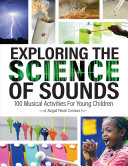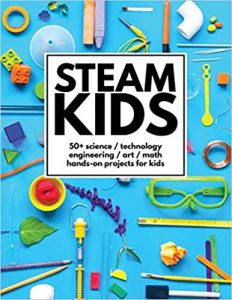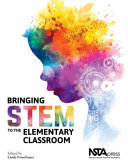Below are some recommended titles found at UBC Education Library to add to your reading list.
by Froschauer, Linda
Many resources help you encourage young children to learn about science, technology, engineering, and math (STEM). But only this book of quality STEM experiences was curated by the veteran educator who edits Science and Children, NSTA’s award-winning journal for elementary teachers. Sensitive to the needs of both preK-5 students and busy teachers, editor Linda Froschauer developed Bringing STEM to the Elementary Classroom as a comprehensive source of classroom-tested STEM investigations. The 36 lessons are:
- conveniently organized into grade-level bands
- grounded in science education research
- designed to encourage learning across disciplines, promote real-world problem-solving skills, introduce children to STEM careers, and serve all students equally well; and
- connected to all elements of the Next Generation Science Standards.
Whether you’re just beginning to delve into STEM experiences or eager for fresh ideas, Bringing STEM to the Elementary Classroom provides you with new, interesting, and productive strategies.
 Exploring the science of sounds: 100 musical activities for young children
Exploring the science of sounds: 100 musical activities for young childrenby Connors, Abigail Flesch
Most preschool teachers have musical instruments in their classrooms but may not realize they can use them for science explorations.
Science, technology, engineering, arts, and math–STEAM–these explorations are crucial for laying a solid foundation for later learning. In this book, discover 100 activities that let children ages 3-6 explore the science of music and sound using materials easy to find for a preschool classroom.
Children will use their bodies to create sounds, explore the relationship between size and pitch, investigate how tempo affects the way we listen to sounds, create musical instruments, and much more. From the drops of rainwater to the tinkling of wind chimes, the science of sound is all around.
 STEAM kids: 50+ science, technology, engineering, art, math hands-on projects for kids
STEAM kids: 50+ science, technology, engineering, art, math hands-on projects for kidsby Carey, Anne; Dziengel, Ana; Scardino, Amber
 Baby steps to STEM: infant and toddler science, technology, engineering, and math activities
Baby steps to STEM: infant and toddler science, technology, engineering, and math activitiesby Barbre, Jean
Innately curious, infants and toddlers love to explore, investigate, and discover–making the earliest years a perfect time to begin teaching the foundations of STEM.
This book defines what science, technology, engineering, and math education looks like for this age group, and why it is so vital for children to develop STEM knowledge. Expand your understanding of STEM to lay the foundation for children to develop skills in critical thinking, communication, collaboration, and creativity.
This book supplies fifty play-based developmentally appropriate activities for introducing STEM. All activities include extensions, inquiry questions, and tips on how to help parents strengthen children’s learning at home.
 An educator’s guide to STEAM: engaging students using real-world problems
An educator’s guide to STEAM: engaging students using real-world problemsby Quigley, Cassie; Herro, Danielle
 STEM education: an emerging field of inquiry
STEM education: an emerging field of inquiry
by Barkatsas, Tasos; Carr, Nicky; Cooper, Grant
2. Delivering STEM Education through School-Industry Partnerships: A Focus on Research and Design / Marc J. de Vries
3. Reading STEM as Discourse / Kathy Jordan
4. Implementing Virtual Reality in the Classroom: Envisaging Possibilities in STEM Education / Li Ping Thong
5. Multiplicative Thinking: A Necessary STEM Foundation / Shalveena Prasad
6. Possibilities and Potential with Young Learners: Making a Case for steam Education / Lisa Borgerding
7. Inquiry-Based Learning in Statistics: When Students Engage with Challenging Problems in STEM Disciplines / Zsolt Lavicza
8. Values in STEM Education: Investigating Macau Secondary Students’ Valuing in Mathematics Learning / Io Keong Cheong
9. Perspectives on STEM Education in Preservice Primary Teacher Education / Tricia Forrester
10. Primary Pre-Service Teachers’ Perceptions of STEM Education: Conceptualisations and Psychosocial Factors / Nicky Carr
11. Building STEM Self-Perception and Capacity in Pre-Service Science Teachers through a School-University Mentor Program / Grant Cooper
12. Building Academic Leadership in STEM Education / Belinda Kennedy.
 STEM in the primary curriculum
STEM in the primary curriculumby Caldwell, Helen (Lecturer in Education); Pope, Sue
LB1585 .S747 2019, EDUCATION LIBRARY stacks
2. STEM in the early years / Eleanor Hoskins
3. Primary science and STEM / Rania Maklad
4. Mathematics in STEM education / Sue Pope
5. Design and technology in STEM / Anne Guilford
6. Foreign languages and STEM / Sarah Lister
7. Drama and STEM / Alison Ramsay
8. Engaging girls in STEM / Neil Smith
9. Computing and STEM / Vasemin Allsop
10. arts in STEM: STEAM / Sway Grantham
11. Preparing for transition to secondary STEM / David Barlex.
 STEM-rich maker learning: designing for equity with youth of color
STEM-rich maker learning: designing for equity with youth of colorby Calabrese Barton, Angela; Tan, Edna
 Step into STEAM: your standards-based action plan for deepening mathematics and science learning, grades K-5
Step into STEAM: your standards-based action plan for deepening mathematics and science learning, grades K-5by Bush, Sarah B; Cook, Kristin Leigh
ch. 1 What Is STEAM and Why Does It Matter?
ch. 2 How Do I Prepare for STEAM Teaching?
ch. 3 What Frameworks Can Guide How I Engage Students in STEAM?
pt. 2 STEPPING INTO STEAM
ch. 4 How Do I Design STEAM Inquiries?
ch. 5 How Do I Implement STEAM Inquiries?
ch. 6 How Do I Assess My Students’ Learning in STEAM?
pt. 3 PUTTING IT ALL TOGETHER IN STEAM
ch. 7 What Are Some Examples of Successful STEAM Inquiries?
ch. 8 How Do I Tie It All Together to Create the STEAM Learning Experience?
ch. 9 How Do I Gather Resources for STEAM?


